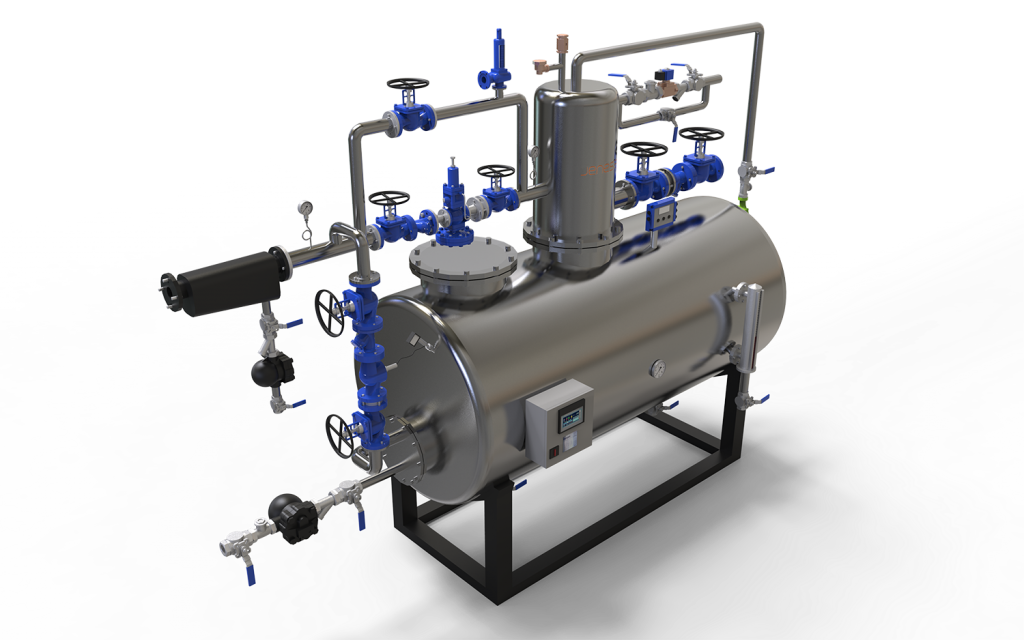Thermal Deaerator
Oxygen (O2) and carbon dioxide (CO2), which are dissolved in the feedwater, are highly corrosive gases. Thus, they must be neutralized so as to prevent corrosion of the steam generator’s metallic components. By means of thermal degassing, CO2 can be removed from the feedwater at a temperature of at least 65 °C and O2 at 102 °C and above.
The released gases are then vented out from the top of the deaerator dome. This type of deaerator, which operates at 105 °C, must be placed 5m above the ground in order to prevent cavitation in the feedwater pump. If the temperature of the condensate tank can reach 80–90 °C due to the hot condensate from the processes, then all the CO2 and most of the O2 will have been removed. The remaining amount of O2 can be removed at relatively low cost by dosing oxygen scavengers in the water.
However, if the temperature of the condensate tank is below 80 °C in plants with insufficient returned condensate, large amounts of oxygen-scavenging chemicals will have to be dosed. As a result, the amount of blowdown will have to be increased to keep the concentration of chemicals within the allowable limits. Due to the aforementioned reasons, deaerators can be used as a cheaper alternative.
Thermal deaerators, i.e., conventional deaerators, heat the feedwater at a pressure of 0.2 barg and a temperature of 105 °C: water flows through perforated trays from above the tank and low-pressure steam entering from below comes in contact with the water, and strips the dissolved gases from it. Specifically, the use of a thermal deaerator is recommended for plants with a condensate tank at a temperature below 80°C and a boiler room at an elevation of at least 7–8 m.

